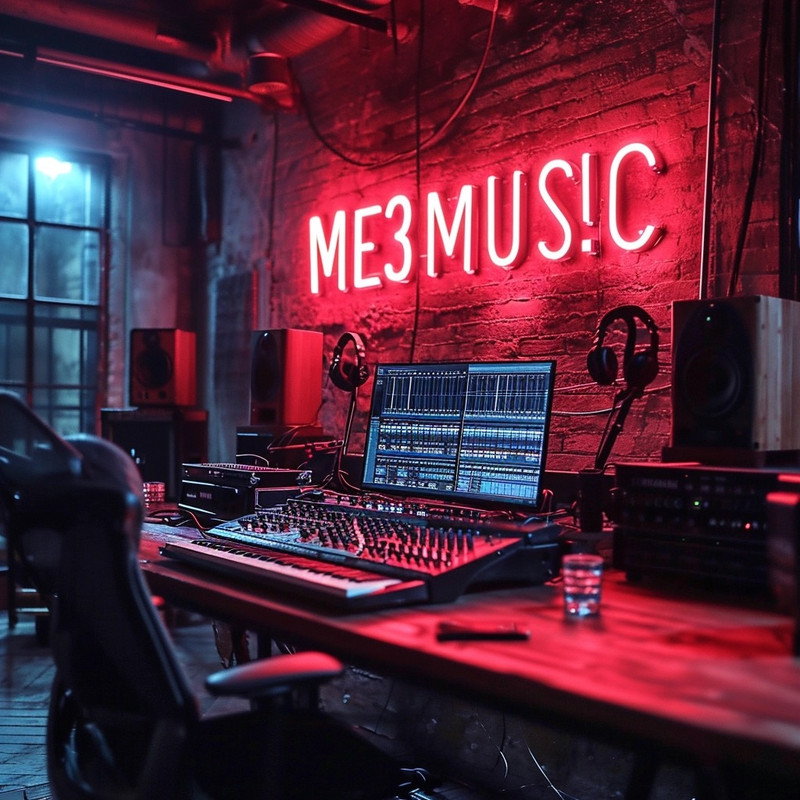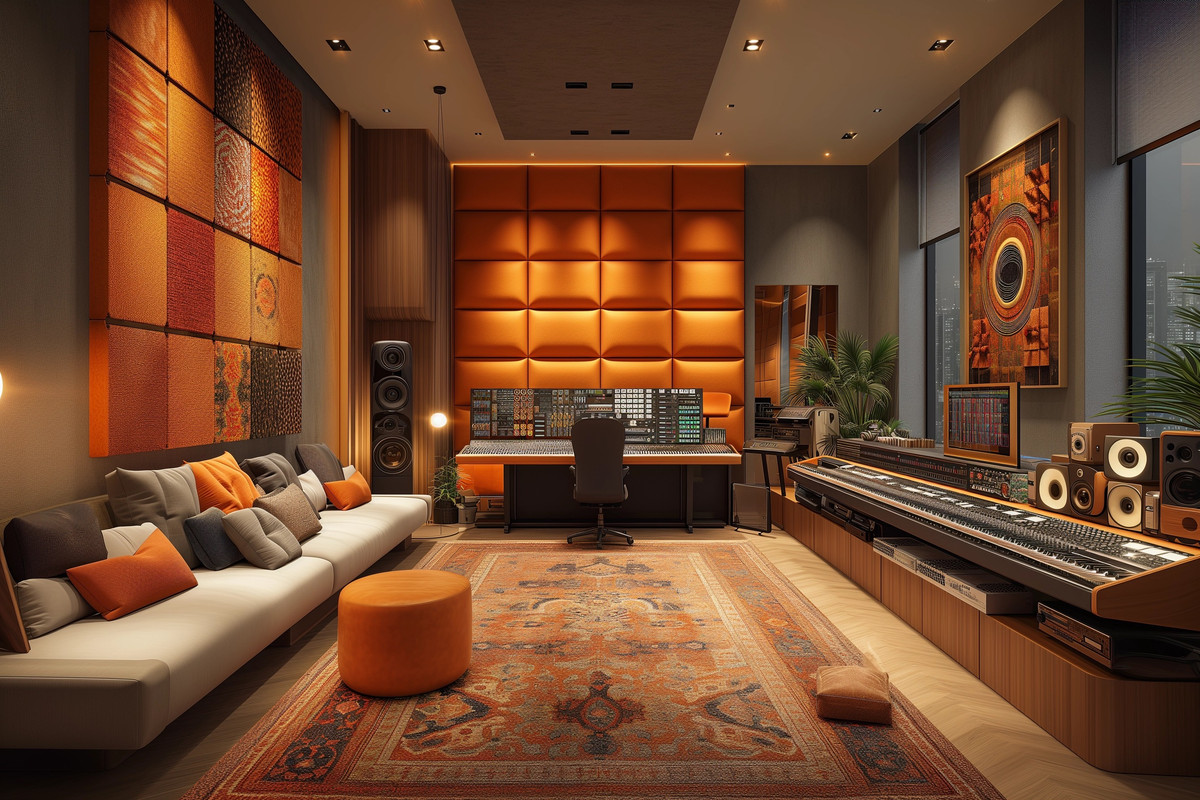

When embarking on this journey, comfort reigns supreme.
The silhouette of a studio chair also communicates much about its character: whether it's minimalist lines that echo modernist sensibilities or more ornate structures that nod to classical influences. This means no more fidgeting to find a comfortable position or standing up every half hour to shake off stiffness. Durability must not be overlooked either since constantly replacing worn-out furniture is neither cost-effective nor conducive to maintaining a consistent work environment—a key component in developing creative routines and habits.
When contemplating the acquisition of a chair for music production pursuits, individuals are often confronted with a dichotomy: should one opt for budget-friendly seating solutions or invest in high-end furniture? Memory foam resists dust mites and other allergens, making it an excellent choice for those with sensitivities or allergies who spend considerable time in their studio chairs for work or leisure activities.
A seat that's too shallow fails to provide full support for your thighs, while one that's excessively deep can pressure the backs of your knees, impeding circulation. They achieve this through several mechanisms such as self-adjusting lumbar supports, articulated backrests, and responsive seat pans.
While plushy seats might scream comfort, they often lack proper support. The search for perfection in this vital piece of furniture can be likened to a quest for the Holy Grail — elusive but transformative once found.
Unveiling this paragon of comfort, we encounter a masterpiece that seamlessly integrates aesthetic appeal with practical features. Materials play a significant role in this balancing act. Enter dynamic ergonomics: this innovative concept refers to chairs that adapt in real-time to the user's body. Ultimately, the choice between economy versus luxury comes down to balancing short-term savings against potential long-term gains in healthful ease and professional output. The chair you select for endless hours in the studio is not merely a seat; it becomes your command center, a throne from which you orchestrate audio masterpieces.
This evolution symbolizes a broader shift towards recognizing the importance of human-centric design—not merely as an afterthought but as a fundamental consideration shaping how tools enhance our abilities rather than impose limitations upon them. Once upon a twilight hue, artisans of rhythm embarked on quests for perfect perches. This decision is not merely about comfort; it also encompasses health considerations and productivity implications. This exploration reveals the best studio chairs, ensuring your experience is unmatched in support and ease throughout editing or any task requiring prolonged sitting.
Firstly, ergonomics play a pivotal role. This increases efficiency as you reach for different pieces of equipment or instruments during your session. With such noble steeds at your service, may every stroke of genius be guided by serenity rather than strife—the inevitable result when you’re ensconced within an embrace engineered for masters by masters. Chairs without this fundamental adjustment could lead to discomfort and health issues over time.
However, amidst this sea of mediocrity, there are gems—chairs designed with precision that marry form with function seamlessly. However, incorporating this functionality without compromising on style requires an innovative approach—melding practicality with elegance. Its innovative backrest aligns seamlessly with the spine's natural curve, promoting an upright position without strain. Yet delve deeper into its design elements, and you'll find that each curve, texture, and material choice speaks volumes about the ethos it carries.


Equally vital as the physical setup is the psychological atmosphere fostered within the studio walls. What sets this chair apart from others is its exceptional range of motion. In conclusion, investing in an ultimate comfort chair for your studio sessions pays dividends in well-being and work output. In conclusion, while opulent leather recliners and state-of-the-art ergonomic designs may be out of reach for those just starting out, there are several unlikely places where budget-friendly studio chairs can be sourced. An optimal chair allows you to sit firmly with your feet planted on the ground while leaving a small gap between your knees and the edge of the seat.
The quest for the ultimate chair is not just about luxury; it's about finding a throne that caters to long hours of meticulous work, one that aligns with the rhythm of their craft. amazon While it may seem improbable to score a high-quality chair through these channels, many people have found incredible bargains on items barely used by their previous owners. Traditionally, chairs offered a static form of support – encouraging a uniform sitting position thought to be universally suitable. A studio chair is not merely a place to rest; it represents a foundational element in a sanctuary where ideas flourish and concepts materialize.
The first enigmatic contender is a chair draped in moonlight velvet—a peculiar choice for studios drenched in shadow and sound waves. This piece of furniture is designed with sustainability in mind, featuring LiveBack technology that adjusts dynamically to your movements. But perhaps what truly sets apart these avant-garde studio chairs is their capacity for personalization. Unlike traditional padding materials like feathers or fiberfill that compress and lose shape over time, memory foam contours to the body's shape.
This nonsensical insertion disrupts our understanding of what makes the Harmony ErgoTune Supreme so desirable among artists seeking both comfort and posture perfection. The right chair can be pivotal in sustaining healthful practices while fostering an environment conducive to creative success—an investment worth making for any dedicated music professional looking to deliver their best work comfortably session after session. The unsung hero of any studio setup is not the latest software update or the fanciest keyboard – it’s the chair we sit in for countless hours. A fixed lumbar support might not align properly with every user's lower back curve, potentially causing more harm than comfort.
Ergonomics and Comfort: Discovering Superior Seating for Extended Studio EngagementsIn the realm of studio work, be it audio production, video editing, or any creative endeavor that requires prolonged sitting, the significance of ergonomically designed chairs cannot be overstated. Whichever camp you fall into, remember that breathability remains essential; materials like mesh allow air circulation which prevents overheating during marathon sessions. Choose a chair with adjustable features—think lumbar support that defies gravity or armrests that refuse conformity—allowing you to orchestrate your ideal sitting posture.
Seat depth is another critical factor often overlooked in the pursuit of comfort. Fabrics that breathe are essential; they allow air circulation, wicking away perspiration and keeping you cool under pressure.
It's less about grandeur or aesthetics and more about ergonomics and personal well-being. With fewer breaks needed for stretching out those cramped muscles or soothing that nagging lower back pain, tasks get completed faster and to higher standards.
The industry's leading seats undergo extensive trials where they are pummeled with weights and exposed to conditions mimicking decadal wear within mere days. The task involves discussing a revolutionary studio chair that has transformed the comfort of music production, but with a twist in the language usage that might lead to a somewhat nonsensical or abstract composition.

Its armrests arc like crescendos cradling forearms weary from conducting symphonies of sliders and dials. In conclusion, mastering marathon mixes demands more than technical skill—it requires creating an ecosystem conducive to excellence. Secondly, let's talk about ergonomic support. Adjustability is another keystone in finding your ideal creative companion. No frills The perfect studio chair should offer a blend of ergonomic support, adjustability, mobility, and durability, all while fitting seamlessly into the aesthetic of your workspace.
Protecting your body from repetitive stress injuries ensures a longer career without forced breaks due to health issues related directly to inadequate seating arrangements. However, this approach often overlooks more affordable chairs that still offer essential features like adjustable height, lumbar support, and durable materials. The human body is not designed to remain static; thus, a chair that can adapt to individual ergonomic needs is essential for maintaining good posture and preventing strain or injury. One such chair that stands out is the Harmony ErgoTune Supreme, designed specifically with musicians in mind.
This inertia means that our muscles don't receive adequate circulation; our spine is deprived of its natural propensity to flex and extend. A relaxed environment facilitates creativity and helps alleviate performance anxiety which can often be a source of tension during recordings. Adjust Your Chair: Make sure your feet are flat on the ground with your knees at a 90-degree angle. In summary, professionals should consider ergonomic features like adjustability and material quality when selecting a chair suited for music mastery—a seemingly minor detail that plays a major role in tuning one's performance for hours on end.
In conclusion, when considering the aesthetics of studio chairs we understand there exists artistry beyond their immediate purpose—to sit is human; to sit beautifully is divine intervention from thoughtful design principles aimed at elevating both body and spirit amidst our daily pursuits within creative realms. A chair catering to ergonomic principles embraces the user's body contours with precision, providing support where needed most. These elements are crucial in determining how well a chair stands up to constant wear and tear. This fluid movement can preserve energy and maintain creative focus.
Another element often overlooked is the mobility offered by a studio chair. Music production often involves dynamic body movements—reaching for that high note on a keyboard or pivoting swiftly from one piece of gear to another—and your chair must withstand constant use without losing its form or function. Moreover, time equals money in any production environment - be it music, video editing, or graphic design - and efficiency is king.
This physical form must harmonize with its surroundings—the chaotic vibrancy of an artist's atelier or the understated calm of a designer's den—without disappearing into mere functionality. Balance cost against features; investing in a quality chair can save you from future back concertos (the painful kind) down the road.
Each cushion whispers secrets of cloud-like serenity to weary backs bent over mixing consoles. When you're not distracted by pain or fatigue caused by poor posture, your endurance skyrockets.
By prioritizing ergonomics, you encourage a healthier sitting position that allows for better blood flow and reduced muscle tension. Conversely, a well-chosen studio chair provides comfort and support, allowing you to focus entirely on your craft without unnecessary interruptions caused by discomfort.
Yes, Secretlab chairs are legitimate. They are well-known for producing high-quality gaming chairs that are popular among gamers and professionals who spend long hours at their desks. Secretlab has earned a strong reputation for comfort, durability, and ergonomic support, making their chairs a sought-after choice in the market.
The cost of a decent office chair can vary widely depending on factors such as ergonomics, materials, brand, and features. Generally, a good quality office chair can range from $100 to $500. However, for chairs with advanced ergonomic features, premium materials, or designer brands, prices can go significantly higher, even exceeding $1000. It's important to balance budget with the need for comfort, especially if you'll be using it for long hours.
The price of a good office chair can vary widely depending on features, ergonomics, materials, and brand. Generally, for a high-quality, ergonomic office chair that provides good support and comfort for long hours of work, you can expect to pay anywhere from $200 to $1000. Investing in a higher-priced chair often means better durability and ergonomics, potentially saving you from future back pain and additional expenses on replacements.